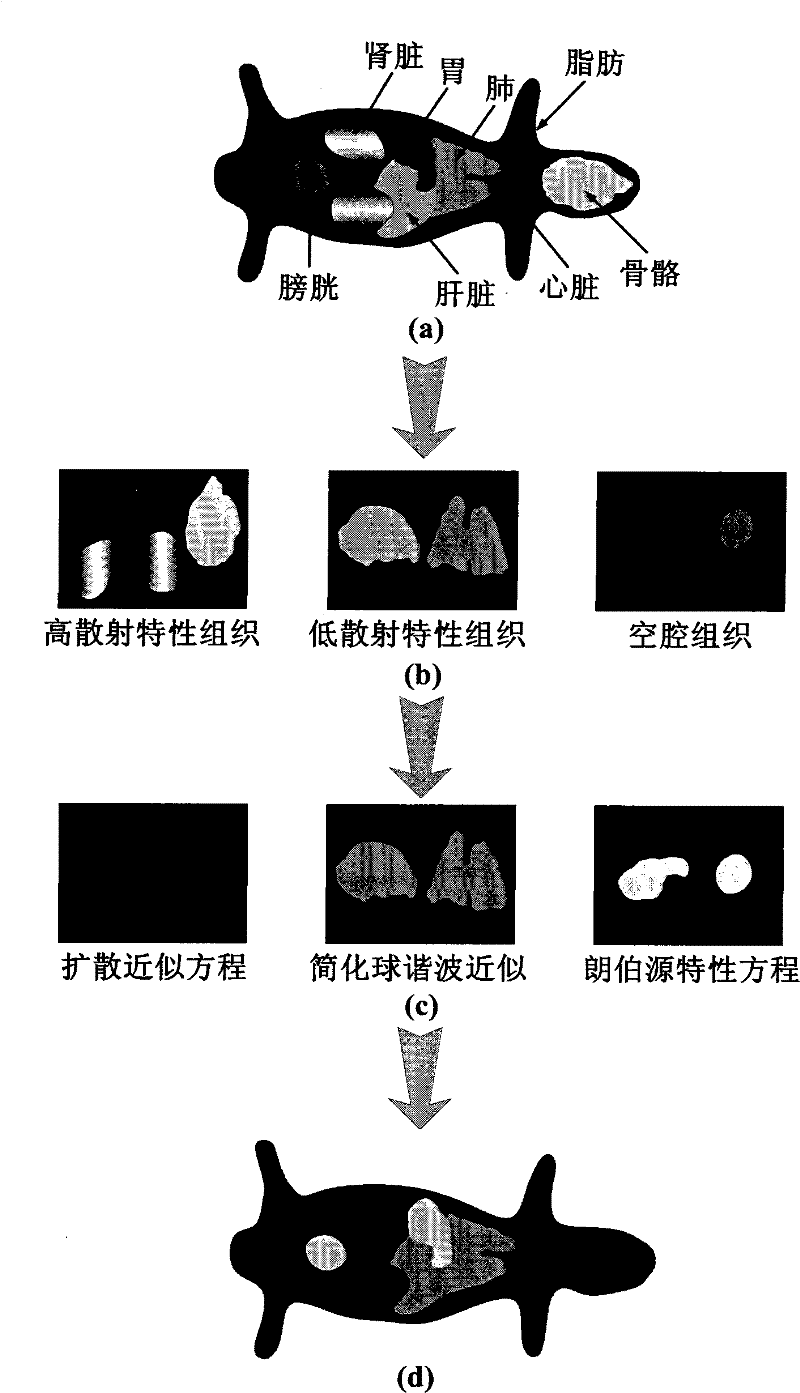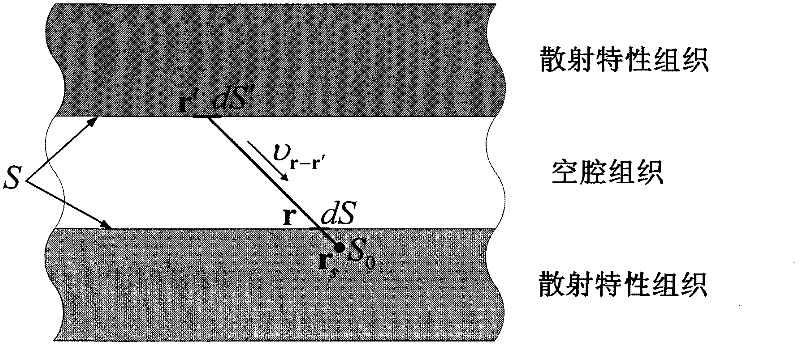Optical three-dimensional imaging method based on biological tissue specificity
A biological tissue, three-dimensional imaging technology, applied in the field of optics, can solve the problems of inability to achieve accurate, fast, high-resolution reconstruction of targeted targets, without considering the sparse characteristics of the biological area of measurement data, etc., to achieve rapid reconstruction, Overcome the inability of imaging accuracy and imaging efficiency to balance, and overcome the effect of insufficient imaging resolution
- Summary
- Abstract
- Description
- Claims
- Application Information
AI Technical Summary
Problems solved by technology
Method used
Image
Examples
Embodiment Construction
[0057] The present invention will be further described below in conjunction with the accompanying drawings.
[0058] refer to figure 1 , the concrete steps of the present invention are as follows:
[0059] Step 1, collect data
[0060] Using the multi-modal molecular imaging system, multi-angle fluorescence data for optical three-dimensional imaging, multi-angle laser data for reconstruction of optical characteristic parameters, and computed tomography projection data for obtaining animal body anatomy are sequentially collected.
[0061] For the collection of multi-angle fluorescence data, control the imaging body to rotate at a certain angle at equal intervals, generally no more than 90° (90° is selected in this example), and use the CCD camera in the multi-modal molecular imaging system to collect fluorescence data from no less than four angles (four angles in this example). Continue to rotate the imaging volume back to the position where the fluorescence data was origina...
PUM
 Login to View More
Login to View More Abstract
Description
Claims
Application Information
 Login to View More
Login to View More - R&D
- Intellectual Property
- Life Sciences
- Materials
- Tech Scout
- Unparalleled Data Quality
- Higher Quality Content
- 60% Fewer Hallucinations
Browse by: Latest US Patents, China's latest patents, Technical Efficacy Thesaurus, Application Domain, Technology Topic, Popular Technical Reports.
© 2025 PatSnap. All rights reserved.Legal|Privacy policy|Modern Slavery Act Transparency Statement|Sitemap|About US| Contact US: help@patsnap.com



